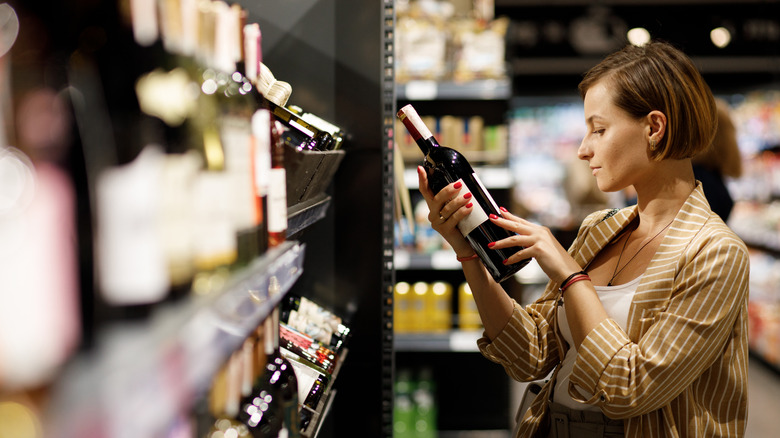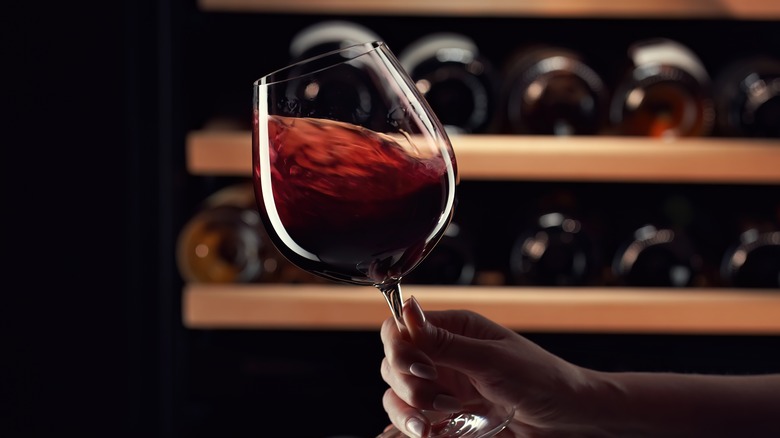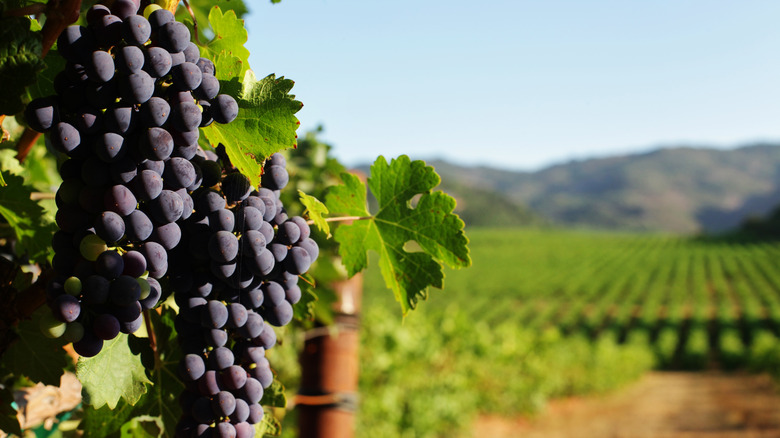Here's What You Can Tell About A Wine's Taste From Its ABV
There are many ways you can approach the work of choosing a bottle of wine. For most shoppers, the look of the label is enough reason to pick one over the other, but a more discerning customer may be after a particular grape varietal, wine region, or country. Or perhaps you're looking for something that will pair well with the meal you intend to enjoy it with — a crisp white, sweet rose, or bold red, for example.
These data points are all loud and proud on the front of the bottle and they work well to help orient you to the wine inside. But while they may give you hints as to how the wine taste or its overall quality, there's an important, often-overlooked factor contributing to a wine's flavor hidden in the fine print — it's ABV, or alcohol by volume. This isn't just something that tells you how likely a wine is to send you under the table. It contributes to the flavor, balance, and mouthfeel of the wine and could be part of the reason you loved one bottle and hated the next, even within the same varietal. Uncovering the secrets of low ABV wine is also great if you're looking to cut down on your alcohol consumption.
How ABV impacts our experience of a wine
When learning to appreciate wine, we are taught to identify and describe certain qualities. The scents, flavors, and bodies we discern within the glass are usually attributed to the grapes used to make the wine, leading people to develop overly simplistic understandings of their palates: they love pinot noir and hate merlot. But each of these categories encompasses great variance — a pinot noir can be anything from light and easy to drink to dry and complex. Relying on varietal alone can leave you disappointed with your decision.
Great wine requires balance among all flavors — so high ABV doesn't necessarily mean good or bad, especially if it's not jiving with the sugar, acid, and tannin in the bottle. But by paying attention to where your favorite wine's ABV falls will help you better understand the characteristics you should look for in the future. In general, higher ABV wines are likely to be bigger, fuller, dryer, and almost jammy in flavor, while lower ABV wines are lighter in body and sweeter. While not all wines are suited to very high or very low alcohol levels, there are recommended ABV ranges for each. By considering ABV alongside other data points, you'll significantly improve your success rate when trying to find a wine you'll love.
What determines a wine's ABV?
So what actually determines ABV? It's not something that's added in by winemakers, but rather something that develops in the wine's fermentation process. Grapes are harvested, removed from their stems, and crushed into a chunky, juicy concoction known among winemakers as a must. Then yeast — either the kind occurring naturally on the grapes, called Saccharomyces cerevisiae, or a commercially produced version added to the mix — gets to work turning the juice's sugar into alcohol.
A wine's final ABV is determined by how much sugar the yeast has to work with during the fermentation process, or how sweet the grapes are. Grapes are harvested when they reach peak sweetness for their intended purpose — earlier or later, depending on the specific grapes and the wine they'll be used to make. But sun exposure accelerates both grape ripening and overall sugar development. Our highest-alcohol wines come from hot climates, while cooler climates mainly produce lower-ABV wines. Looking to incorporate ABV into your arsenal of wine lingo? A high-alcohol wine produced in a warmer climate often gets the adjective "hot" assigned to it — the high alcohol in it is an indicator used to determine its terroir.



